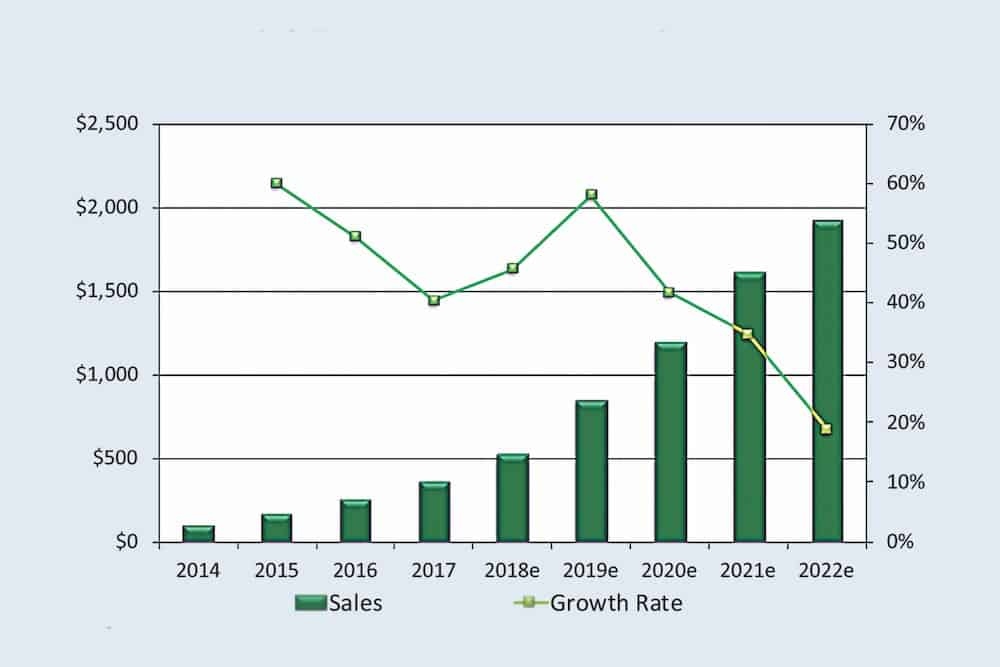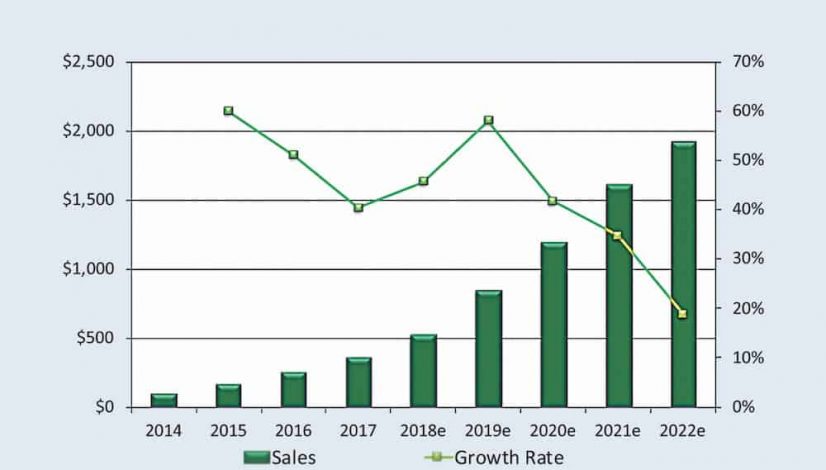Is The Hemp Revolution Coming?
It’s been a persistent urban myth among some cannabis advocates that the Declaration of Independence and its 56 signatures were written on hemp paper. Of course, that theory has been thoroughly debunked by researchers at Monticello (Thomas Jefferson’s estate), the Library of Congress and the National Archives. The final document signed by the founding fathers at the Continental Congress in July 1776 was engrossed on parchment made from animal skin. The original rough draft, written by Jefferson and kept among the Jefferson Papers collection at the Library of Congress, has watermarks indicating it to be Dutch-made paper consisting of flax or linen rags.
Nevertheless, some 242 years later, hemp is revolutionary in its own way. As recently noted in our December 2017 column (“Is This Finally the Big Moment for Hemp?”), hemp is enjoying an international renaissance. Both extremely versatile and ecologically friendly to produce, hemp is being grown and used worldwide in the development of an ever-expanding array of commercial applications including hemp-based cannabidiol (CBD) and terpenoid oils, tinctures, foods, dietary supplements, nutraceuticals, body-care products, textiles, construction materials, applied materials, and industrial products.
Despite a long, rich history in America (preceding the establishment of the United States itself) and being touted for its benefits as recently as World War II (“Hemp for Victory!” was a rallying slogan to defeat the Axis), for the past half-century industrial hemp has suffered prohibited federal classification because of its kinship to cannabis. The plants are related, but while marijuana remains banned under the federal Controlled Substances Act due to the psychoactive properties of THC, hemp typically contains less than 0.3 percent of it, whereas medical and adult-use cannabis commonly features between 5 and 25 percent THC.
New Frontier Data is tracking some detailed prospective market trajectories, and recently acquired the Hemp Business Journal to bolster resources for leading data and market intelligence in the industry. As Sean Murphy, New Frontier Data’s director of hemp analytics, notes, “There is continued tension in the industry, with actions being taken by and between hemp and marijuana players in states like Oregon. There’s also industry love happening with an increase of M&A [mergers and acquisitions] deals in Canada being driven by Canadian LPs [licensed producers], Big Tobacco, and Big Pharmaceuticals placing bets and positioning their interests in the market.”

Courtesy of Hemp Business Journal
As detailed in the Hemp Business Journal’s “CBD Report 2018,” the total CBD market in the United States grew at a rate of 40 percent in 2017 and is projected to reach $1.2 billion in sales by 2020, and nearly $2 billion by 2022. In 2017, $190 million of those sales came from hemp-based sources, compared to $177 million from adult-use and medical cannabis sources. Given the potential profits involved, it is no surprise to learn of some fissures opening among interested players within the reform movement.
- Some US cannabis operators are already resenting how hemp products are increasingly battling for retail shelf space in dispensaries.
- Hemp is cultivated by the acre on farms, whereas cannabis is grown by the square foot in greenhouses or indoor-cultivation facilities, giving hemp growers an economic advantage to scale and dominate supply chains for CBD products.
- Hemp acreage in the United States keeps expanding, if unevenly. While Oregon recorded nearly 3,500 cultivated hemp acres in 2017, its neighbor Washington cultivated about 175 acres—a 20-to-one difference.
- With legalized hemp programs in 34 states, protectionist legislation is being proposed in several legislatures to shield the legal cannabis market from hemp-based competition.
- Canada’s hemp production continues to set the pace for the fledgling US market. Health Canada reported 138,00 acres licensed for cultivation in 2017, and the Hemp Business Journal estimates that 110,000 acres were under cultivation (actual cultivation data is yet to be verified by Health Canada or the Canadian Hemp Trade Alliance).
- As Canadian hemp can now be used only to yield seeds and fiber (leaving leaves and flower unutilized), global competitors from China, Switzerland and other European Union nations are buying whole plants for expansive processing.
- Even so, Canadian LPs are quickly positioning themselves to penetrate the global CBD market by acquiring hemp companies in preparation of new cannabis laws this summer. The spike in M&A activity among Canadian LPs and small hemp cultivators and extractors is a clear sign of Canadian LPs moving quickly into the CBD market upon passage of the new legislation.
Assuming such skirmishing to be indicative of future market activity, projections for the production, use and sales of low-THC products will remain sky-high.
This feature was published in the July 2018 issue of High Times magazine. Subscribe right here.
The post Is The Hemp Revolution Coming? appeared first on High Times.


